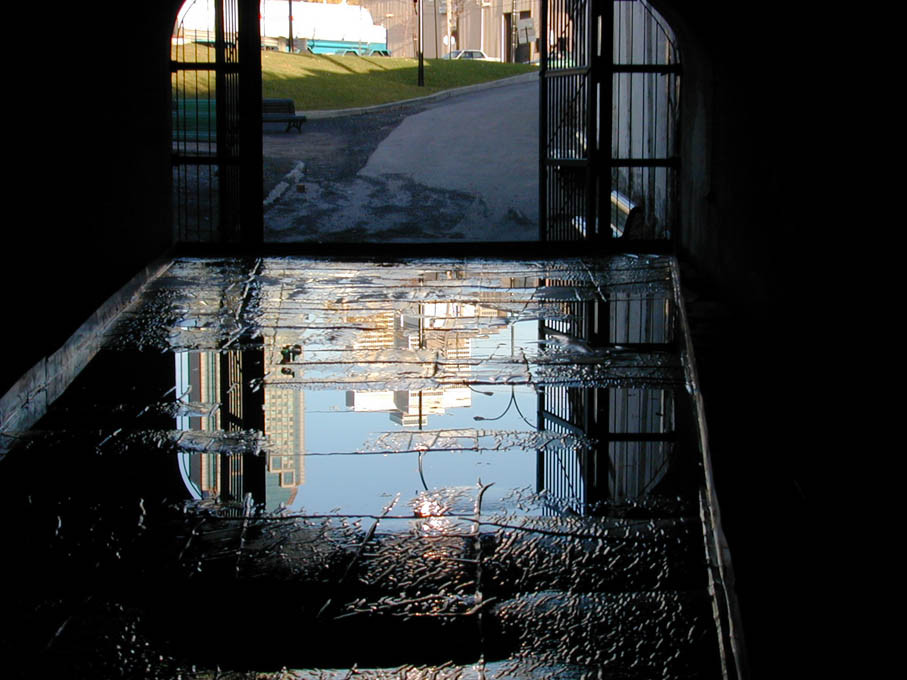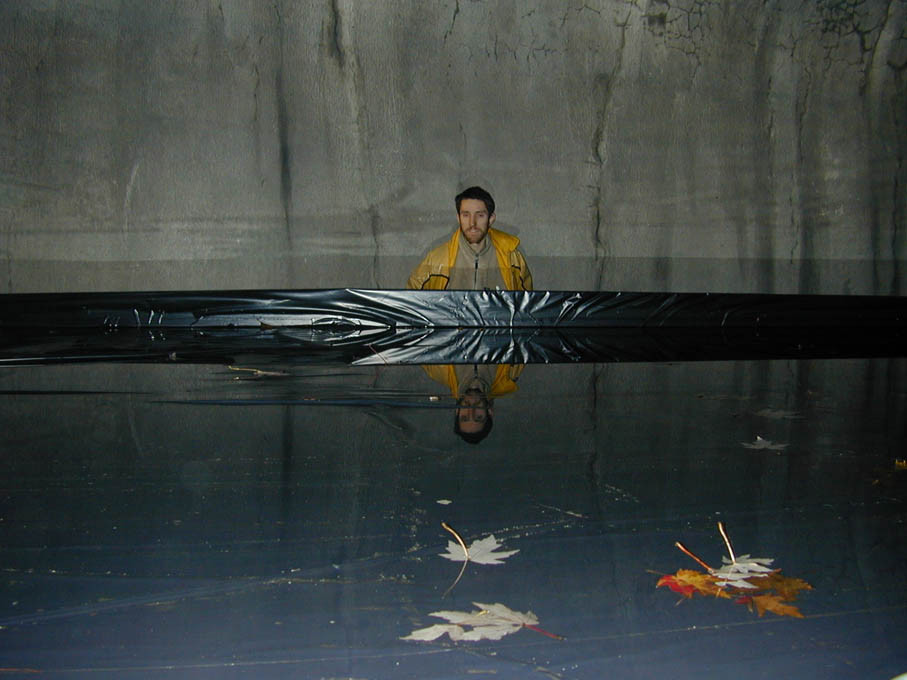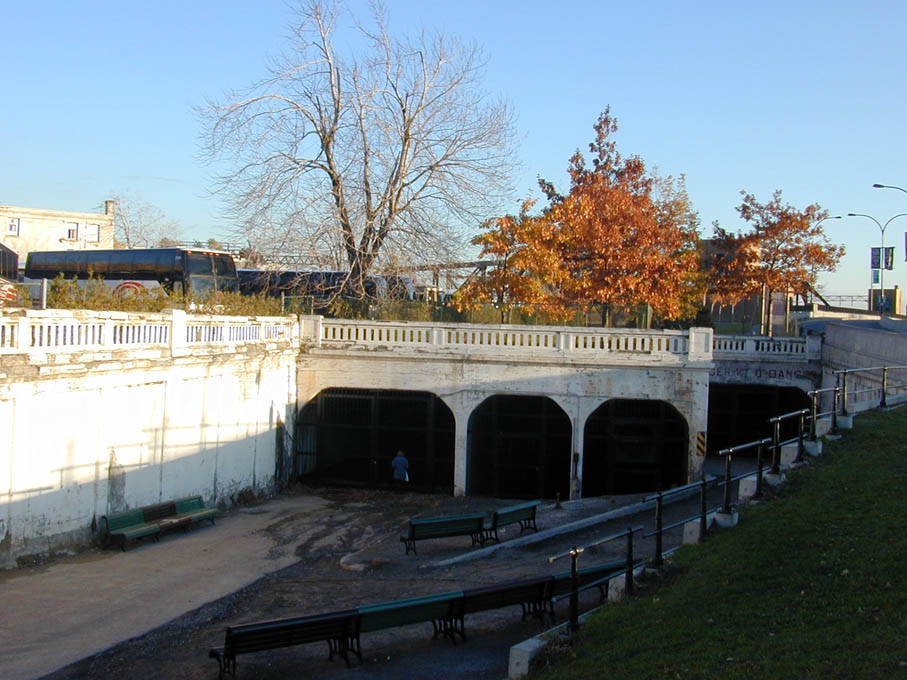



The Tunnel event writes itself into the continuity of on-site interventions organized by Quartier Éphémère in the heart of the Faubourg des Récollets/Old Griffintown and on the shores of the Lachine Canal. After Panique Au Fauboug in 1997, Proposition pour 3 tunnels by Marcus Macdonald in 1999 and Silophone de [The User] in 2000/2001 and at the occasion of ARTEFACT 2001, Quartier Éphémère hopes to stimulate new artistic interventions that revalue industrial fallow land, demonstrating their poetry as well as their visual, sonar and theatrical characteristics.
Composed of 4 highway overpasses, the Wellington Tunnel was abandoned in 1994, having been closed for security reasons. Plunging under the Lachine Canal, the entrance to the tunnel is situated at the tip of Wellington Street, its exit on the other side having been buried. In the past, the Wellington tunnel was used by tramways, vehicles and pedestrians, but was eventually replaced by a bridge. It inhabits one of the rare pieces of fallow industrial land in the area that isn’t undergoing renovation given its vocation (a tunnel), its placement (under a highway) and the state it’s in.
With two on site installations, Tunnel aims to confront the different types of perception, interpretation and artistic practices, in order to reveal the poetry and strangeness of the space.
The installations use sound and projection respectively as architectural material in order to offer an impressionable experience of this usually inaccessible urban space. Using sound and/or visual elements in an on site manner makes the physical occupation of this architectural space at this volume, a way to allow it to depart from its functionality. Francisco Lopez exhibits Sonic Beast, an interactive sonar installation along with Portable Palace (Evelina Domnitch and Dimitry Gelfand) who exhibits a projection of fixed images in the cave of the tunnel, animated mysteriously with water vapor.
Francisco Lopez concentrates his work on the exploration of on site architectural and organic environments that he interprets musically in the form of recordings, installation and performances that use a variety of technologies in order to capture, manipulate and diffuse.
His education in biology as well as his research in Central America, profoundly modeled the sonar perception and aesthetic that he develops in his creations. The physical experience of sound has always been a central aspect of the Lopez’s practice, equally important in terms of recording as it is in the diffusion of his work. In the beginning of the 90’s, he collaborated with the German architect Klaus Shuwerk in the forum of project Tonhaus, a building in which the structure was conceived for the transmission of sound. Between 1998 and 2001, he been working on a project Sonar Buildings on New York, presented in 2001 in Anchorage (Brooklyn) and he was an artist in residence at Quartier Éphémère in the setting of Silophone. He’s proposal for the Wellington tunnel consisted of an immersive sonar environment that reacts to the presence of spectators as they penetrate the obscurity of the tunnel.
Portable Palace was conceived by a pair of artists with Russian heritage living in New York who are very active in the domain of new media. They are particularly interested in the creation of fixed images, figurative or abstract that are animated through the use of water vapor. Their work has been shown in Europe in many galleries and festivals, notably Interferences, an urban multimedia art festival in Belfort, 2000.
Located: Wellington Tunnel, at the corner of the streets de la Montagne and Wellington.
Francisco López has participate also to the Silophone project.
